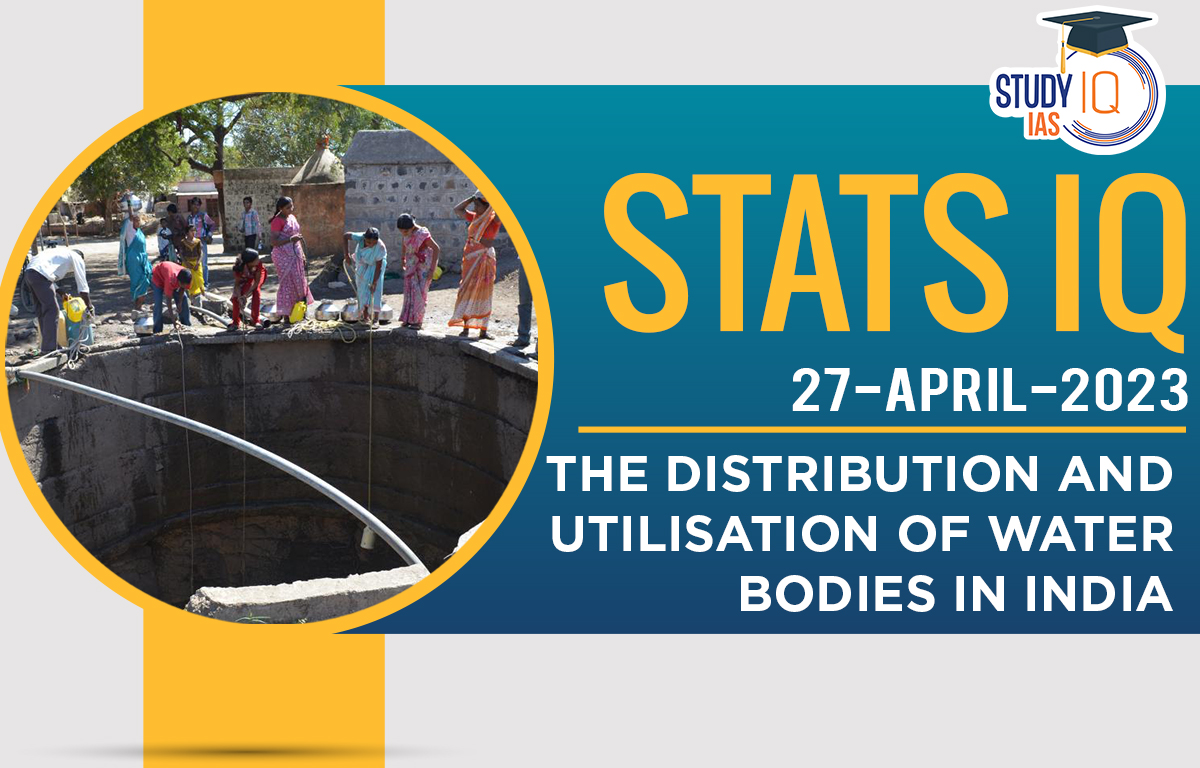Context: The Ministry of Jal Shakti has launched the first census of water bodies in India, which throws light on the number of water bodies in the countries.
Defining water bodies
- The document designates water body as any natural or man-made structure used for storing water for various purposes, such as irrigation, industry, fish farming, domestic use, recreation, religious activities, and groundwater recharge
- Any structure that collects and stores water from melting ice, streams, springs, rain, or drainage from residential or other areas, or stores water diverted from a stream, nala, or river, is also considered a water body.
Categories of water bodies
- Ponds comprise 59.5%
- Tanks at 15.7%
- Reservoirs at 12.1%
- Water conservation projects such as percolation tanks and check dams at 9.3%
- Lakes at 0.9%
- Other types at 2.5%
State-wise distribution of water bodies
- West Bengal has the highest number of ponds and reservoirs.
- Andhra Pradesh hosts highest number of tanks.
- Tamil Nadu has the highest number of lakes.
- Maharashtra is leading in terms of water conservation initiatives.
Usage pattern of water bodies
- The majority of them are used for fish farming, with other uses being irrigation, replenishing groundwater, and providing water for household and drinking needs.
- About 55.5% are dedicated to fish farming
- 16.5% to irrigation
- 12.1% to groundwater replenishment
- 10.1% to domestic and drinking water needs
- Remaining is used for recreational, industrial, religious and other purposes.
State-wise pattern of usage
- 50% of the water bodies are used for fish farming in Arunachal Pradesh, Sikkim, Tripura, Mizoram, Nagaland, Meghalaya, Assam and the eastern States of West Bengal and Odisha.
- Over 50% of the water bodies are used for irrigation in Gujarat, Telangana, Karnataka and Jharkhand.
- More than 50% are used for drinking in Manipur and Himachal Pradesh.
- Over 10% of the water bodies in Sikkim are used for recreational purposes.
- Over 50% of the water bodies in Uttarakhand, Punjab and Maharashtra are used for groundwater recharge.
- Industrial usage of water bodies is minimal in all the States.
Urban and rural distribution
- Over 97.1% of water bodies can be found in rural regions while only 2.9% are located in urban areas.
Miscellaneous
- Use: About 83.7% of water bodies are currently in use, while the rest are unused due to factors such as construction, siltation, irreparable damage, and industrial effluents.
- Encroachment: A total of 1.6% water bodies have been encroached upon, of which 67.6% are ponds, 21% are tanks, and 4.5% involve water conservation schemes, check dams, or percolation tanks.
- Ownership: Out of the total water bodies, 55.2% are privately owned; the rest are publicly owned.


 DRDO and Air Force Successfully Test Ind...
DRDO and Air Force Successfully Test Ind...
 IB ACIO Recruitment 2025 Notification Ou...
IB ACIO Recruitment 2025 Notification Ou...





















